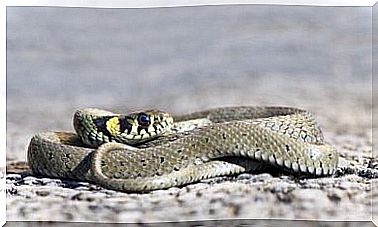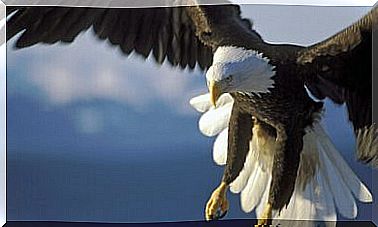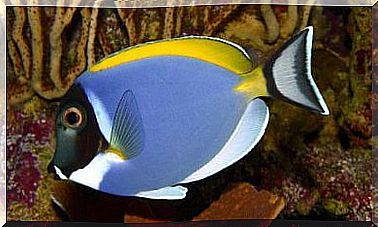The Freshwater Shrimp: Characteristics And Habitat
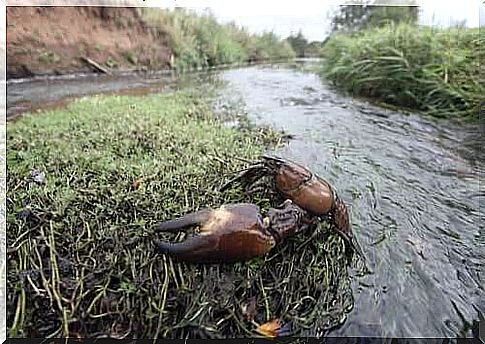
The term freshwater shrimp is used to indicate several species of crustacean living in rivers and belonging to the order Astacidea . This animal is similar to a lobster or a small lobster.
In the following lines we invite you to discover the freshwater shrimp, its characteristics, its habits and its life cycle.
Morphological characteristics and taxonomy of the freshwater shrimp
Freshwater shrimp are decapod crustaceans, such as lobsters, shrimps, and crabs. Like all members of this order, their body is divided into two main parts, the abdomen and the cephalothorax ; in turn, 19 body segments are formed in them.
Depending on the species, a couple of appendages can be observed starting from each of these segments. Despite this, in many freshwater shrimps the aforementioned appendages are reduced.
The shell of this animal has two longitudinal sutures well separated from each other. Like most crustaceans, the freshwater shrimp sheds its exoskeleton.
The body of this animal is noticeably longer than most other crayfish that live in rivers and seas. In its adult stage it can measure between 17 and 18 centimeters. Due to this characteristic, simple sight can easily be confused with a lobster or a small lobster.
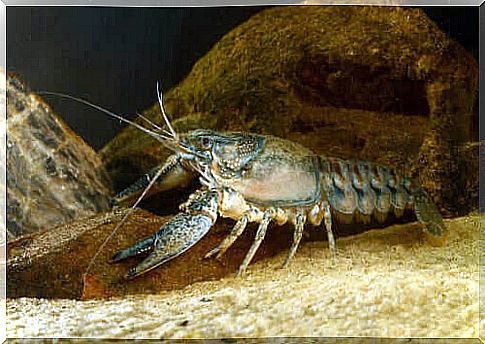
One of the most particular characteristics of the freshwater shrimp are the wrinkled claws, which show a white color on the ventral face. The absence of carpopoditi (or “wrists”) also stands out.
The ventral portions of the legs maintain the same pattern as the claws, white in color. The freshwater shrimp’s body can display different shades of brown, gray, green, blue, and black.
Natural habitat and nutrition
The different species of freshwater shrimp live in freshwater, precisely, of all continents, with the logical exception of Antarctica. Typically, they avoid masses that freeze in their entirety in winter. They don’t like fast currents either, although they exploit them during the migration phases.
Most of these shrimp are very sensitive to polluted waters, although some species manage to survive in unhealthy conditions. It is for this reason that their presence is considered a clue to the good quality of the water in which they are found.
These crustaceans follow a very varied diet: they consume practically any type of organic material available in their environment. In turn, however, they are often prey to numerous predators, from insects to birds and aquatic mammals.
In addition to this, freshwater prawns are caught by the man who sells their meat for international gastronomy. China, the United States and Turkey are some of the main exporters of these crustaceans in the world.
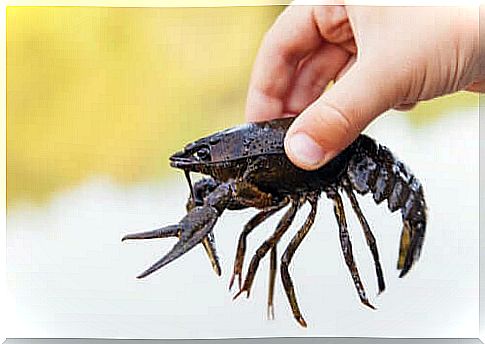
Behavior and reproduction of the freshwater shrimp
The freshwater shrimp has nocturnal habits, precisely due to the abundance of predators in its natural habitat. At night and at dawn he goes out to feed and copulate when the mating season arrives.
Because it is impossible for them to survive in very cold or frozen waters, many species of freshwater shrimp are forced to migrate during the winter. To move more easily, they take advantage of the currents that lead them to warmer waters near the tropics.
The reproduction of this animal does not go unnoticed as it occurs through a very aggressive copulation. Before mating, the male and female start a kind of fight that can cause even fatal injuries.
Only when the male manages to knock out the female does copulation and subsequent fertilization take place. It is then that he uses his pleopods (fake legs) present in his abdomen to expel sperm.
The copulation of the freshwater shrimp usually lasts about a quarter of an hour and the females carry on the gestation for sixty days. Eventually, each female can lay up to nine hundred eggs for each mating season.
The eggs can take up to three weeks to hatch and give birth to new shrimp. The female takes care of the eggs and protects and nourishes the young during their first two or three weeks of life. Despite this, freshwater shrimps only complete their maturation after they are three years old.
It should be emphasized, however, that each shrimp species can show variations in mating, gestation time and development of the young.



